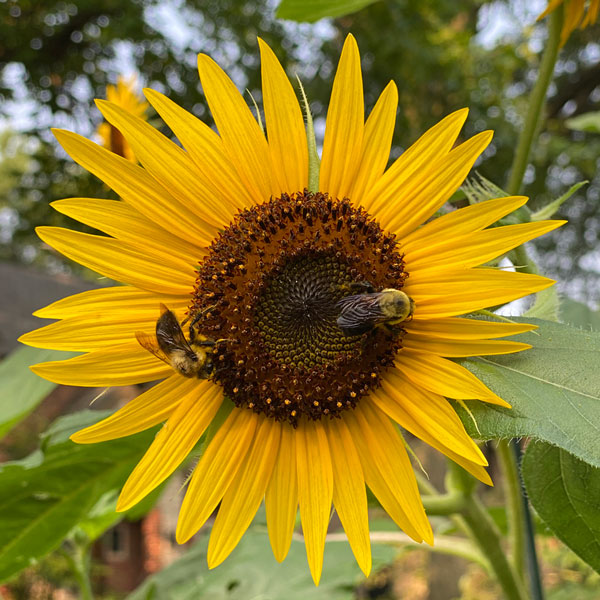
By Linda Wiggen Kraft,
Healthy Planet Green & Growing Editor
As the world focuses on Eastern Europe and Russia wages an evil war against Ukraine, there are many ways to honor and show solidarity to the people of Ukraine. Sunflowers are their national flower and a symbol of peace. In 1966 sunflowers were planted at a missile base in a ceremony celebrating Ukraine’s removal of all its nuclear weapons. Sunflowers have been grown in Ukraine since the 1700s. Today it is one of the world’s largest producers of sunflower seeds and oil with almost 17 million acres of sunflowers grown.
Sunflowers (helianthus annuus) get their name from the Greek word for sun, and the Latin for annual. They are native to central and southern North America. Native Americans in Mexico and Southwest United States cultivated sunflowers from 3000 B.C. These ancient flowers were multibranched with small flowers. Over time Native Americans bred the sunflower so the seed head became larger. After sunflowers were introduced to Europe in the 1500s and Eastern Europe later, plant breeders there created the large head sunflower that we think of when we think sunflowers. Seeds for these plants were brought back to North America with Russians immigrants in the late 1800s.
Gardeners can show support for Ukraine by planting sunflowers. There are many different ones to choose from. The classic large single flowers with centers filled with seeds and yellow petals come in different heights. The ones that are grown for seed and oil are the tall large center ones with yellow petals. These usually have the word Mammoth in the name. They can grow to be 10-12 feet. Mammoth Grey stripe is the one with seeds for snacking. There are others that look similar but are shorter. Domino and Taiyo grow about 5-6 feet tall. Short Stuff grows 2.5 feet tall. Big Smile and Bambino grow only 16-20 inches tall. These sunflowers produce pollen so bees and insects love them. When the flower matures and seeds are ready, these are great treats for birds.
There are many other kinds of sunflowers that aren’t the classic look, but lovely in their own way. A very tall one called Skyscraper grows 12 feet tall. It is multibranched with smaller yellow flower heads. It harkens back to the sunflowers of ancient Native Americans with its shape. Another 8 feet tall one is multibranched with smaller yellow flowers, it is actually a perennial, called Helianthus Maximillian. There are many like the classic sunflower but with different colored petals. Italian Ice has white petals. Lemon Queen is yellow, but a soft yellow. Chocolate is deep dark burgundy red petaled. Red Sun has red petals. Autumn Beauty grows red, orange and burgundy flowers. Some sunflowers don’t look like the classic form. Some have flower heads full of many many more petals. Tall Teddy Bear, Dwarf Teddy Bear and Orange Sun all have many petals. Some sunflowers have multicolored petals like Ring of Fire, Earth Walker, and Evening Colors.
The sunflowers listed above are only a few of the many different sunflowers we can grow in our gardens. The ones above are pollen producers with the many small flowers that each produce a seed. When choosing sunflowers to grow make sure they are the ones that have pollen, some have been bred to be pollenless. Although beautiful, they don’t provide pollen for pollinators. The sunflowers mentioned above, except for Helianthus Maximillian, are annuals. The seeds can be planted directly in the ground, or started inside 2-3 weeks before the last frost. The taller ones may need staking. Make sure to leave enough room between each plant.
Plant some sunflowers this year in your garden. They will bring beauty and food to you and wildlife. Plant some to show solidarity for peace in Ukraine and around the world.
Linda Wiggen Kraft is a landscape designer who creates holistic and organic gardens. She is also an artist and creativity workshop leader. She is leading a “Fantasy Flower” watercolor workshop in June. Find out more about the workshop, subscribe to her blog and Instagram on her website: www.CreativityForTheSoul.com. Call her at 314 504-4266.


